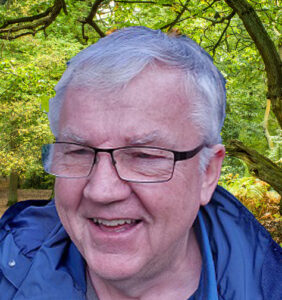I helped a bit with the translation of this book. It was such fascinating work for me as I actually lived through all these stages of the climate hysteria myself. Please take half-an-hour to watch the video interview with the lead author, Hans Labohm. The book will be available on Amazon.com soon, but I am not sure exactly when. If you are interested in a copy, please contact me and we will make a plan. Below the video I give the reviews by three third parties.
For the English translations of three reviews of the Dutch version of ‘Chronicles of Climate Hysteria’ as published on the website of Bol.com. see here.
***
Climate untruths
Skeptic
A nice compilation about the sense and nonsense of the climate story. There is no evidence whatsoever that CO2 causes global warming. What CO2 does do is slow down the heat transport from the earth to space (i.e. cooling), but it can never warm the earth. The effect of CO2 and other greenhouse gases can best be compared to the insulation of a house: the insulation also slows down the heat flux to the cold environment, but the insulation can never warm your house up. If that were true, the perpetual motion machine would have been invented. CO2 also has a saturation effect: additional CO2 emissions have hardly any effect. It can be calculated that doubling the amount of CO2 in the atmosphere (i.e. from 400 to 800 ppm) would warm the earth by 0.71°C; more or less warming is due to other causes, especially cosmic and geological causes, over which we as humans have no influence whatsoever.
A book that everyone should read, because the consequences of the climate measures are disastrous: energy is becoming more expensive; since energy is used in every process, everything becomes more expensive. This makes it more difficult for our companies to compete with companies located in regions that do not believe in the climate story, causing these companies to leave Europe and our years of hard-earned prosperity might be jeopardized in just a few years.
***
Review
Resistance fighter
Is the climate debate turning around? Are the climate ‘deniers’ of a while ago now liberal in the climate debate? The call from the Social Cultural Planning Office to also take seriously those who think differently about the climate is telling. Critical citizens also belong to the Netherlands. But a real change is yet to come.
For thinking about climate change, the Chronicles of Climate Hysteria can be a stone that perhaps shifts the flow of the river. With their climate-realistic articles, lead authors Hans Labohm, Dick Thoenes and Jeroen Hetzler provide a snapshot of the debate on climate change of the last twenty years.
This not only concerns the climatological aspects of atmospheric warming, such as the role of clouds and the influence of CO2, but also highlights the social context: the political implications, the economic consequences, the impact on the citizen’s purse. and the role of the media.
The collection includes a large number of articles by Prof. Dr. Dick Thoenes who sheds light on numerous topics. In a simple, clear manner he contradicts the findings of the IPCC and speaks of assumptions as absolute truths. Estimates are no more than guesses and the attached probabilities, according to him, lack any scientific basis and are therefore misleading. He also criticizes ’the trade’ in CO2 and the exaggerated attribution of CO2 as a human warming agent.
Jeroen Hetzler, the forestry economist and a man of numbers, gets into an argument with Peter Kuipers Munneke about critical security of supply of wind and solar energy, especially at hospitals. He also advises North Pole traveler and climate journalist Bernice Notenboom about the alleged lack of ice in the North Pole in the near future.
Although the collection contains a number of graphs, including the damned hockey stick, it is also a book about people who position climate realism as a rational opposite.
Like Sonja Boehmer Christiansen, the early climate realist who already realized in the 1980s that climate science is not neutral at all but has its own interest: in her eyes, even faith can be an important factor in alarmism. We also see Margaret Thatcher in the setting of that time and as a PhD scholar, putting ‘global warming’ on the international agenda, not because she knows much about it, but to profile herself. The Iron Lady wants to kill two birds with one stone: rationalize the coal mines and give priority to nuclear energy. It all works out differently.
We are introduced to the Danish statistician Bjorn Lomborg who, like a kind of Pieter Omtzigt, is rattling at the gates of the scientific climate order. The fear of environmental disasters is unfounded, as he proves in a book with 2930 footnotes and a bibliography of 70 pages. He is receiving fierce attacks on his work, is not allowed to respond in scientific journals and they want to dismiss him from his position as director of his institute of environmental assessment. Function elsewhere…Lomborg was allowed to give a lecture at the climate-alarmist TU Delft this year, albeit again under protest. Students just wanted to hear his story.
Climate skeptic Labohm himself also has to give way under pressure. His outspoken opinion on climate change is not accepted by his employer Clingendael. And suddenly there is a very long arm that decides that ‘Labohm has to get out of there.’
It’s good that there is now history tale on it: ‘Chronicles of Climate Hysteria’.
***
Climate hysteria
NEMO2020
“Man has always been prone to hysteria, but it has never been as brutal as it is today.” It is the title of a column by Rob Hoogland, one of the columnists of the Telegraaf. The text fits in seamlessly with the book by Hans Labohm et al. entitled “Chronicles of Climate Hysteria”.
In my opinion, Hans Labohm and his co-authors have succeeded exceptionally well in making a controversial subject, which is also not that easy, readable to a large audience, while maintaining their journalistic and scientific integrity. The book is a collection of a large number of articles, some of which were already published before 2004. Almost everything was already known at that time.
After 2004 the situation would change. The science itself hardly changed, but the tone became different, harder, more personal. Scandals were constantly coming to light. “Chronicles of Climate Hysteria” describes some of them in detail. The authors do not mince their words.
In a guest contribution, Ed Zuiderwijk takes us to the year 2100. In retrospect, he is amazed at how “a cabal of ignorant fanatics, half-educated researchers, political hangers-on, and the necessary charlatans control the research in atmospheric science and obtained its applications”.
Perhaps a bit harshly formulated, but it gives an impression of the frustrations that a skeptical scientist encounters in his working life. Against this background, it is astonishing how tolerant and moderate Hans Labohm has remained. He has a harsh assessment of institutions but never plays the man.
“Chronicles” refers to a form of historiography in which events are described in chronological order. But when does the “climate hysteria” start? In my opinion, the IPCC reports up to and including AR 5 of 2013 are one-sidedly alarmist, but not hysterical. The founding fathers of alarmism, Bert Bolin, Stephan Schneider, James Hansen, Michael Mann, made extensive use of the “double ethical bind”. They exaggerated, made selective use of statistical methods, censored their opponents but never became hysterical.
Until 2013, this also applied to the IPCC as a whole. But in 2015 there was a change of chairmanship at the IPCC – the incumbent chairman was dismissed – and the Paris Agreements were concluded at the UN level. Everything changed. The Accords called for zero CO2 emissions by 2050, a Herculean task that would require draconian measures. Thousands of billions would have to be diverted from health care, public housing, education, agriculture, elderly care, etc. To make this possible, citizens had to be made afraid, terrified, of climate change. After 2015, the IPCC only, almost exclusively, talks about greenhouse gases, especially CO2, as the cause of all warming since 1950. The evidence for this is weak. A hysterical girl lectures everyone.

Henry Pool.
And far above that we find someone who unashamedly tells an extreme story. Guterres, the UN Secretary General, sees the earth burning, the oceans boiling. “The era of global boiling has arrived,” he said recently. It’s complete nonsense but no one protested. Incomprehensible. With a nod to Tolkien, I would like to change that statement to: “The age of reason has ended. The age of hysteria has just begun.”
And I see that as the greatest value of the Chronicles.” It points to a future that should not happen and invites us to think for ourselves. To see the roots of something that we do not want to happen. But then we have to do something. Reading the “Chronicles of Climate Hysteria” is a good start.
***
The book will be available on Amazon.com soon, but I am not sure exactly when. If you are interested in a copy, please contact me and we will make a plan. You can send an SMS to Henry, 0836297690.
***
Source Henry Pool’s website here.
***

 By Henry Pool (South Africa)
By Henry Pool (South Africa)




Ik zal nog kijken of de grote boek handelaars hier ge-interesseerd zijn on het boek hier in de winkels te verkopen.
What next?
https://www.ninefornews.nl/gerrit-hiemstra-who-baas-tedros-en-wef-mevrouw-krijgen-eredoctoraat-van-rijksuniversiteit-groningen/
In het boek “Gekochte journalisten” van Udo Ulfkotte wordt uitgelegd waarom deze “prijzen” worden uitgereikt.
Het zijn “bedankjes” van de macht aan mensen die zich hebben ingespannen om doelen van de macht te verwezenlijken.
Die worden bedankt met meer macht en aanzien en niet zelden een fors geldbedrag.
Het prijzen systeem is volledig in handen van de macht. Alle prijzen, van de Nobel prijs tot de Pulitzer Prize worden alleen gegeven aan hulpjes van de macht.
Je kunt dit gewoon netwerk corruptie noemen.
‘Alle prijzen, van de Nobel prijs tot de Pulitzer Prize worden alleen gegeven aan hulpjes van de macht’.
Tja, te triest voor woorden hoor.
Gelukkig kennen ze dat niet in Rusland of China.
Daar verdwijnen ze gewoon in een strafkamp want daar hebben ze niets met onafhankelijke geesten.
En dan nog maar eens deze mening.
Wat is de toegevoegde waarde van dit artikel ten opzichte van het eerdere artikel over dit boek waar in de kop van deze site linksboven al apart naar verwezen wordt?
Had jij deze video al gezien, Frans? Ik heb er even iets aan gesneden.
Drijvende zonnecellen. Een groot succes. Not.
https://t.me/multipolar_news/517
Vreselijk.
Vreselijk? Heerlijk om te zien , toch? Dan wordt de idiotie van groene energie goed zichtbaar.
Dat zijn de eerste proeven.
Wij krijgen een proef met 0,5MW aan zonnepanelen, ~12km voor de kust van Scheveningen.
Daarmee zitten we met offshore zon ruwweg op de plek waar offshore wind was begin jaren negentig.
Gezien de belangen en de mogelijkheden zullen verdere verbeteringen volgen totdat zo ongeveer ieder offshore windpark ook zonnepanelen krijgt op ~25% van het zee oppervlak dat het windpark in beslag neemt. Daarmee wordt immers de CF van het park en het onderstation en de kabel naar land, met ruwweg ~14% verhoogd zodat >70% goed haalbaar wordt.
Waarmee ze niet veraf zijn van de CF van kerncentrales.
Immers zonnepanelen produceren vooral bij mooi weer is weinig wind.
Voor het eerst dat er proeven worden gedaan met zonneparken op zeewater. Op zoetwater zijn ze al gehouden. Was kennelijk geen succes, want nooit meer wat over gehoord. Het zeezonnepark moet golven aan kunnen tot 1 meter hoog. Ik woon aan de kust en weet zodoende dat een golf van 1 meter hoog niks is. Ik heb ooit golven over de noordpier van IJmuiden zien slaan. Die golven sloegen dus niet stuk op de pier, maar walsten er gewoon overheen. Ook lag er een keer een betonblok met een gewicht van 40 ton op de pier na een windkracht 8. Een zogenaamde rogue wave had het blok weggeslagen. Gelukkig hebben de modellen berekend dat storm en regen op zee geen problemen opleveren voor het zonnepark.
Hoe de opgewekte elektriciteit aan land komt, ben ik niet achter gekomen. Er zal ergens een kilometers lange kabel getrokken moeten worden. Ik vrees dat alleen al de productie van die kabel en het transport van de kabel vanuit Haaksbergen naar Scheveningen meer energie gaat kosten dan het zonnepark ooit zal opbrengen. 0,5 MW is goed voor 150 huishoudens. Niet schokkend veel voor de vele miljoenen aan onderzoekskosten. Maar ja, subsidies redden het project.